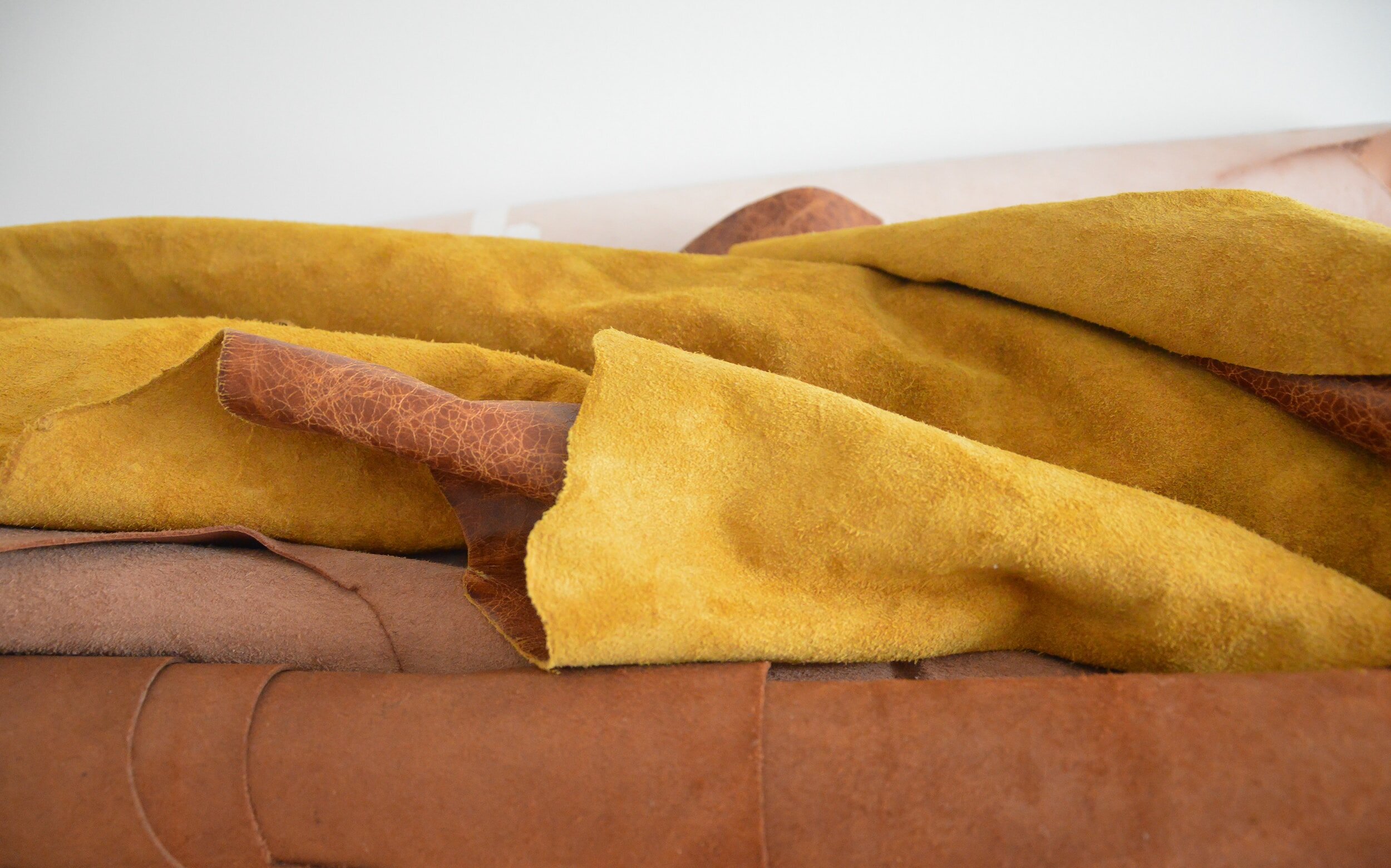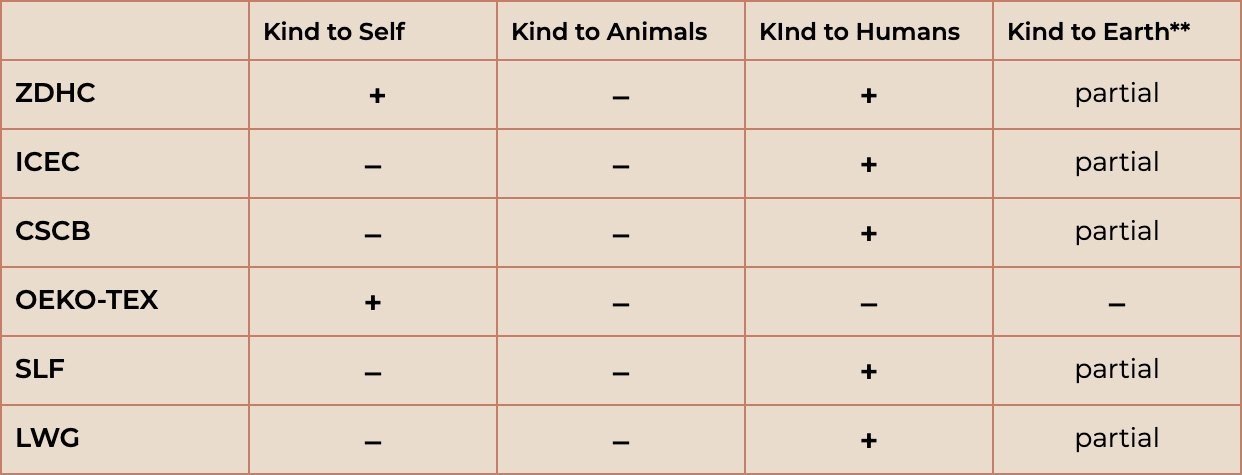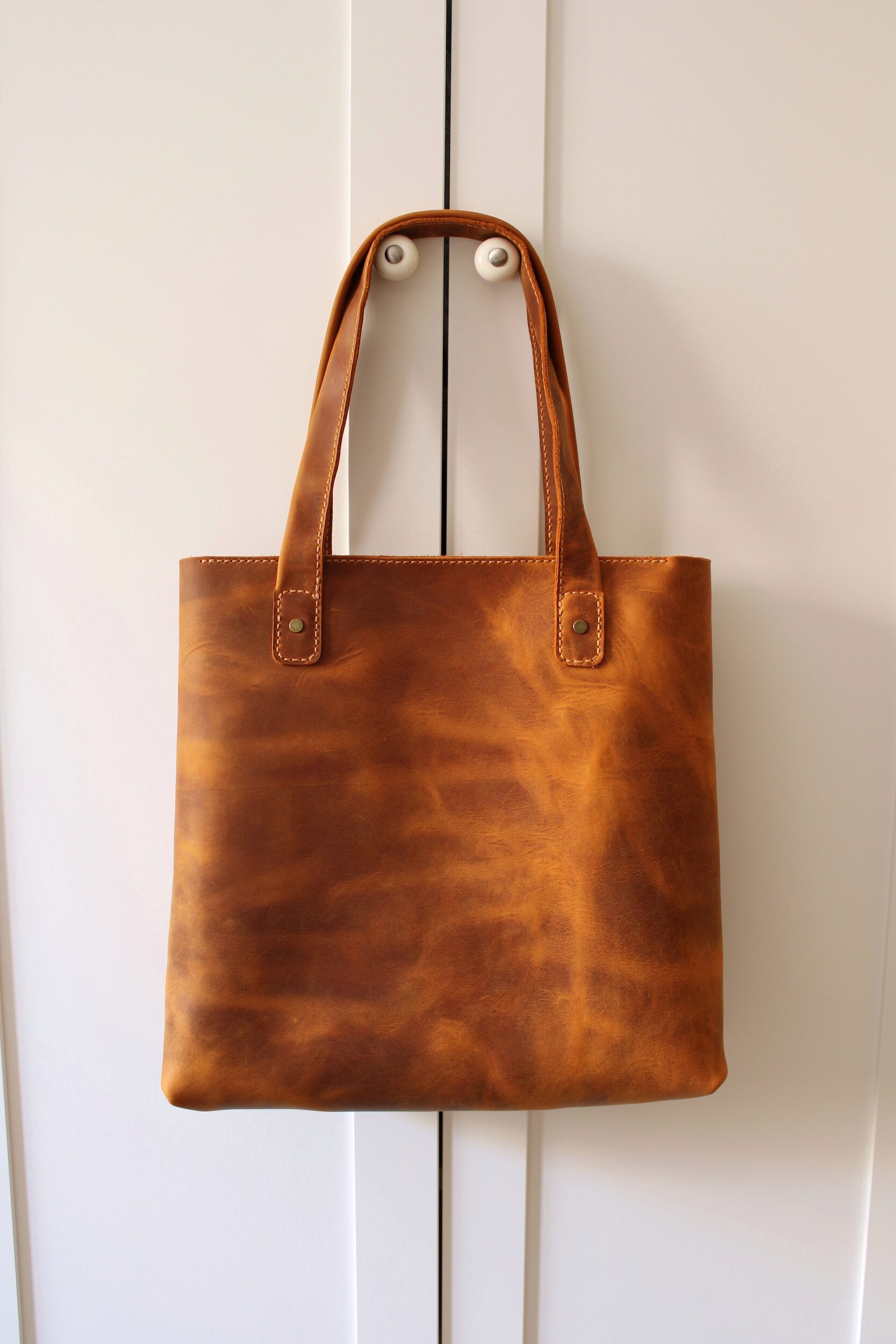The facts.
-
There are 6 main leather certification bodies and each studies different variables in the process.
-
Similar to “certified organic”, the certification is a badge of honor which companies must apply for.
-
These certifications are voluntary and only a small number of companies go through the process.
Leather certification… the big picture.
We’ve all seen that cute pair of leather shoes that claims to be certified giving us permission to feel better about buying the product? Right?! But, what do these certifications really mean? We already discussed in part 1 of our leather series that the very nature of leather – animal hides from commercial animal farms – makes this a complex environmental and ethical topic. What then goes into the certification process and what should we know? Let’s apply our Kindhub lens.
The 6 Big Certifications
-
ICEC – Institute of Quality certification for the Leather Sector
-
OEKO-TEX – Leather Standard
-
LWG – Leather Working Group
ZDHC – This company, based in the Netherland’s has a primary focus which is toxic chemicals in the fashion industry. According to their website, “The Roadmap to Zero Programme, by ZDHC, leads the fashion industry to eliminate harmful chemicals from its global supply chain”.
ICEC – This is a European certification given primarily to Tanneries (and their associated Leather Manufacturers and Subcontractors) on several metrics related to environmental and social practices. According to their website “The ICEC certification is issued to tanneries that are certified in the environmental, ethical-social, economic and product areas.”
CSCB – This is a sustainability focused certification used in the production of Brazilian Leathers. According to their website, “A sustainable tannery is one that develops their activities with economic results, reduces environmental impact, provides integral working conditions and interacts with other interested parties.”
OEKO-TEX— This Swiss Company’s Standard 100 and Leather Standard certification is focused on human health. According to their website, “The LEATHER STANDARD label indicates that the labeled article has successfully passed a test for chemicals that are harmful to health.”
SLF – This British Company focuses on ESG in the Leather Industry. According to their website, “Our mission is to support the global leather value chain to learn, to improve and to protect for future generations, through the People ~ Planet ~ Profit Principle.”
LWG – This is a British non-profit membership organization that aims to build better processes around leather manufacturing. According to their website, “ Our community works together in a pre-competitive way to make responsible leather production and sourcing a reality.” They have 4 certifications aimed at leather manufacturers, leather traders, subcontractors and commissioning manufacturers”
Is the animal rearing process included in these leather certifications?
None of the certifications include the animal rearing process in the evaluation process. Sustainability claims from these certifications are only calculated after the animal hide is harvested and so excludes a large chunk of the carbon footprint of leather. Many of these certifying agencies take the position that leather is a by-product (NOT Coproduct) of the animal industry. Part 1 of this series looked at this topic, as it is pretty evident that the answer is not as clear cut as these organizations make it seem.
-
LWG, while it excludes animal rearing from its certification, has created an Animal Working Group in an attempt to collect information on animal welfare for its members. It provides detailed information on the animal welfare regulations and protocols in various countries.
-
SLF takes the position that Animal Welfare is the responsibility of the farmers and ranchers and excludes this lens from the certification.
-
ICEC also excludes this from its certification but has developed an animal welfare and traceability tool which looks at country and local regulations around animal welfare, again as a tool for leather manufacturers.
What stands out here?
-
None of these are USA based – these are all European certifications
-
All of these certifications ignore Animal Welfare – a very large variable in the leather making process
-
There is no certification for China, India, and Russia, three of the world’s largest leather producers
-
Most of the leather sold is not traceable and the problem of environmental pollution with huge human and animal costs is real. Think about where you stand and your actions as outlined on the KIndhub Continuum
Leather certification summary through the Kindhub lens:
** Kind to Earth is rated partial as they ignore the carbon footprint/emissions created from growing the animals for leather
Additional resources.
Products:
We’ve compiled a list of brands who offer leather alternative products.
GO SHOPPING >
Check out these companies who are innovating in the Bioleather space.
LEARN MORE >



